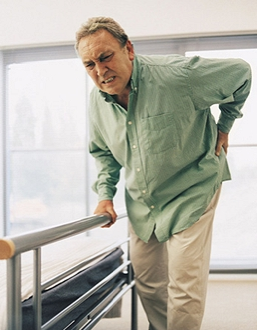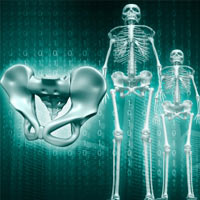
Most Alexander Technique teachers avoid delving deeply into the psychological aspects of back pain and neck pain. As Alexander Technique teachers, we are usually more concerned with how we use ourselves, body and mind. Alexander teachers help their students replace harmful postural habits with beneficial ones, and teach how to use Alexander Technique principles in any circumstance.
There are various causes of back pain, neck pain, and shoulder pain, and it stands to reason that negative emotions could be one of them. Dr. John Sarno, in his book ‘Healing Back Pain’, indicates that:
“Tension myositis syndrome, or TMS, is the major cause of the common syndromes of pain involving the neck, shoulders, back, buttocks and limbs… … The only muscles in the body that are susceptible to TMS are those in the back of the neck, the entire back, and the buttocks, known collectively as postural muscles. They are so named because they maintain the correct posture of the head and trunk and contribute to the effective use of the arms.” The author states: TMS begins in the brain. Repressed emotions start a process wherein the nervous system causes a reduction in blood flow to muscles, leading to oxygen deprivation and resulting in pain.
…Perhaps the most important (but most difficult) thing that patients must do is to resume all physical activity, including the most vigorous. This means overcoming the fear of bending, lifting, jogging, playing tennis or any other sport, and a hundred other common physical things. It means unlearning all the nonsense about the correct way you are supposed to bend, lift, sit, stand lie in bed, which swimming strokes are good and bad, what kind of chair or mattress you must use, shoes or corset or brace you must wear, and many other bits of medical mythology.” -Dr. John Sarno
It is not difficult to imagine that these empowering, positive thoughts might help some people immediately and dramatically knowing what we know about the mind/body connection.
In many circumstances, vigorous exercise may not be a logical choice. Certain people with severe or even moderate back pain might not benefit from vigorous exercises such as jogging, for example. The National Institute of Neurological Disorders reports: Pain can occur when, for example, someone lifts something too heavy or overstretches, causing a sprain, strain, or spasm in one of the muscles or ligaments in the back. If the spine becomes overly strained or compressed, a disc may rupture or bulge outward.
As an Alexander Technique teacher I constantly see the effects of merely slumping at the computer all day, and witness how it can cause back pain or neck pain. And, I think Dr. Sarno would agree that the solution is not to sit up rigidly straight in military posture, shoulders pushed back, chest puffed out, stomach in, chin back etc. etc.
Learning and applying Alexander Technique principles to sitting at the computer, walking, bending etc., can diminish and eliminate existing musculoskeletal pain, and the Alexander Technique is also invaluable in preventing neck pain and back pain. The prestigious British Medical Journal featured the Alexander Technique on it’s cover, reporting the results of a study conducted involving 597 people with back pain. It stated that lessons in the Alexander Technique was effective for back pain. We Alexander Technique teachers see the efficacy of the Alexander Technique all the time. Looking to misuse of the body as a contributing factor to neck or back pain is like looking for hay in a haystack.
Comments always welcome.
Mark Josefsberg-Alexander Technique NYC
www.Facebook.com/AlexanderTechniqueNYC
(917) 709-4648










Interesting and thought-provoking post Mark. The only thing I’d like to add is that recent research has clearly shown that the Alexander Technique can have a positive influence on the very postural muscles Dr. Sarno is talking about. And this research, which is on-going, is unique in that the results are not at all dependent on subjective accounts – the Technique’s influence on postural tone can be measured very precisely using a testing device that has only recently become available.
You can listen to a podcast interview with one of the main researchers on this project here: https://bodylearningcast.com/muscle/ and you can read more about his studies to date here: https://alexandertechnique.com/research.htm
Thanks Robert,
Exactly. The Alexander Technique has an effect on the postural muscles Dr. Sarno is talking about. Equally as amazing is that there is proof that muscles can affect the brain both in function and structure!
Imagine that: As you free your neck you will be changing your brain ( altering your mood?) I was happy to be able to teach a neuroscientist last week, and he was amazed at the Alexander Technique. One of the exciting relatively new branches is embodied neuroscience-signals from the body to the brain.